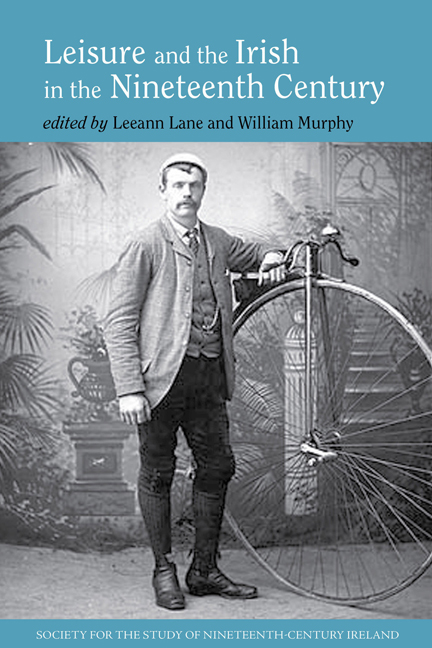Book contents
- Frontmatter
- Contents
- List of Figures and Tables
- Introduction
- Leisure and Associational Culture
- 1 Politics as Leisure: Brass Bands in Cork, 1845–1918
- 2 The Functions of Association Football in the Boys’ Brigade in Ireland, 1888–1914
- Leisure Spaces
- Leisure in Literature
- Leisure, Tourism and Travel
- Leisure and Female Élites
- Notes on Contributors
- Index
2 - The Functions of Association Football in the Boys’ Brigade in Ireland, 1888–1914
from Leisure and Associational Culture
- Frontmatter
- Contents
- List of Figures and Tables
- Introduction
- Leisure and Associational Culture
- 1 Politics as Leisure: Brass Bands in Cork, 1845–1918
- 2 The Functions of Association Football in the Boys’ Brigade in Ireland, 1888–1914
- Leisure Spaces
- Leisure in Literature
- Leisure, Tourism and Travel
- Leisure and Female Élites
- Notes on Contributors
- Index
Summary
The Boys’ Brigade was a Protestant organisation and one of the largest youth movements in pre-war Britain and Ireland open to boys between the ages of twelve and seventeen. It was founded in the Free Church Mission Hall, a Sunday school in Glasgow, on 4 October 1883 by William Smith. The declared aim was ‘the advancement of Christ's kingdom among boys, and the promotion of habits of obedience, reverence, self-respect, and all that conduces to Christian manliness’. The organisation reached Ireland in 1888 when the 1st Company was formed at Charlotte Street in Belfast in connection with the church of St Mary Magdalene and in 1891 the organisation was formed in Dublin in connection with St Matthias's church. An analysis of the size of battalions in the United Kingdom reveals that in 1900 the Dublin battalion was the fourth largest in the United Kingdom with 1,132 boys: only London, Manchester and the stronghold of Glasgow were larger. Belfast was the ninth largest with 740 boys.
Their aim was fundamentally religious and this was achieved by the provision of a range of leisure facilities. This approach is indicative of attempts during the period by religious organisations to provide an array of social activities. As a religious organisation, part of the impetus for their emergence was to bring adolescents within a sphere of moral influence by providing ancillary attractions, an approach that was designed to counter the difficulty that organised religion experienced in attracting working-class members. Their advent can also be attributed to a wide range of developments in the period which placed an increasing emphasis on adolescent males. The concept of adolescence itself emerged in the period, and with it a more sophisticated understanding of this life stage. It was characterised as a period of adjustment and there was increasing apprehension of adolescents’ perceived instability and vulnerability. This led to a desire to provide guidance to this age group and the Boys’ Brigade was a practical manifestation of these intellectual developments. They aimed to provide activities in a safe and secure environment as an alternative to unsupervised leisure time which provoked much anxiety, especially in urban areas where adolescents were more visible. It is therefore no surprise that in Ireland the Boys’ Brigade experienced their largest growth in the major cities of Dublin and Belfast.
- Type
- Chapter
- Information
- Leisure and the Irish in the Nineteenth Century , pp. 41 - 58Publisher: Liverpool University PressPrint publication year: 2016



